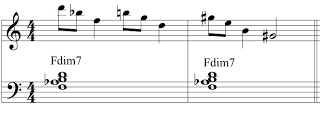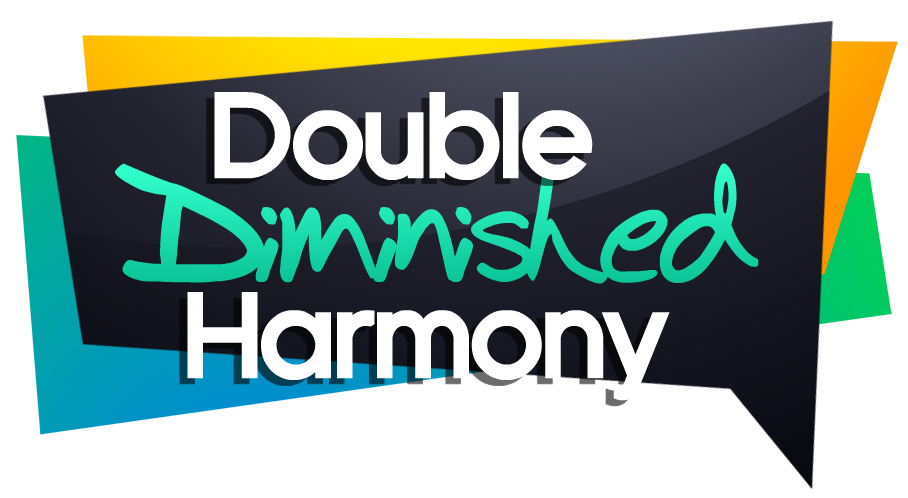Several years ago, I transcribed a song entitled “Chance” by jazz pianist Kenny Kirkland. It is from his self titled jazz album released in 1999. Within his composition “Chance,” Kirkland utilizes double-diminished harmony amongst other sophisticated harmonies.
The sound of double diminished harmony intruiges me so I decided to share a thorough explaination of the concept to help others who might be interested in it.
Double diminished harmony isn’t solely used by Kenny Kirkland, but is utilized by a host of modern jazz pianists in the 21st century. Pianists like Chick Corea, Herbie Hancock and Joey Calderazzo also utilize double diminished harmony extensively in their compositions and improvisations. Chick Corea’s composition “Now He Sings, Now He Sobs” for example, exemplifies the double diminished harmony. You can listen to it here.
What is Double Diminished Harmony?
Double diminished harmony is constructed by playing two fully diminished seventh chords in which the root note of each chord are a major ninth apart from each other. An illustration of this can be seen in Example 1 below. (F diminished 7th chord in the left hand and G diminished 7th chord in the right hand.) The sound of this harmony is very thick and dense. Also, an interesting fact about double diminished harmony is that the two fully diminished 7th chords making up the harmony, contain all the notes of a diminished scale- starting whole step. (See Example 1 and Example 2)

One Chord – Eight Different Chord Voicings
The double diminished chord, as explained above, is one chord that can be used to voice eight different chords as follows: Fdim7, A-flat dim7, Bdim7, Ddim7, G7#9, Bb7#9, Db7#9, E7#9. The root of these chords are derived from each note of the double diminished chord.
The fully diminished seventh chords originate from the four notes on the bottom of the double diminished chord. The corresponding scale that can be played with each fully diminished 7th chord is a diminished scale starting whole step as illustrated in Example 3 below. F fully dim7 with F diminished scale starting whole step and A-flat fully dim7 with A-flat diminished scale starting whole step. Following Example 3 below is a list of the four fully diminished seventh chords and corresponding scales that can be extracted from the F diminished scale starting whole step.

Example 3
Fdim7 = F diminished scale (starting whole step)
A-flat dim7 = A-flat diminished scale (starting whole step)
Bdim7 = B diminished scale (starting whole step)
Ddim7 = D diminished scale (starting whole step)

Additionally, added notes derived from the diminished scale may be added to fully diminished 7th chords rendering a more dissonant harmony. Note how the 7th of the F fully diminished seventh chord is replaced by the E in Example 4 below, and the 7th of an Ab fully diminished 7th is replaced by G in Example 5 below, which is also derived from the diminished scale. Melodically, diminished scales starting whole step can be used with these harmonies.
Note, for any of the diminished chords above you may add any combination of notes from Gdim7 chord to add more dissonance to the harmony.
Dominant sharp nine chords are derived from the four notes on top of the double diminished chord. The corresponding scale that works with each dominant 7 #9 chord is a diminished scale starting half step. Example 6 below illustrates this utilizing G7#9 with a G diminished scale starting 1/2 step and Example 7 below illustrates Bb7#9 with B-flat diminished scale starting 1/2 step. Following Example 6 and 7 below is a list of the four dominant 7 #9 chords and corresponding diminished scales that can be extracted from the F diminished scale starting whole step.

G7#9 = G diminished scale (starting half step)
Bb7#9 = Bb diminished scale (starting half step)
Db7#9 = Db diminished scale (starting half step)
E7#9 = E diminished scale (starting half step)
Melodic Shapes Within Diminished Scales
Within diminished harmony in general, melodic shapes such as major and minor triads and many others can be constructed to stimulate melodic interest. Example 8 below illustrates the use of major triads within diminished harmony. Particularly, B-flat, G and E major triads are played in conjunction with a F fully diminished 7 chord.

Example 9 below illustrates the use of minor triads within diminished harmony. Particularly, B-flat, G and E minor triads are played in conjunction with an F fully diminished 7 chord.

Something important about double diminished harmony is that both the fully diminished 7th chords (with added notes if you choose) and dominant sharp nine chords can be used in conjunction with diminished melodic lines. This is very useful when improvising because a pianist for example can vary the comping chords utilized in the left hand. Example 10 below illustrates the use of various chords found within diminished harmony while playing major and minor triads in the right hand.

Because the diminished scale is a symmetrical scale, a host of melodic patterns can be constructed within the diminished scale beyond major and minor triads. Example 11 below illustrates the use of rootless dominant #9 chords being arpeggiated within the F diminished scale (starting whole step). Beginning on beat 2 of measure one G7#9 is arpeggiated, beginning on beat 1 of measure two E7#9 is arpeggiated, and beginning on beat 4 of measure two Db7#9 is arpeggiated. Note, this is just one example of many melodic patterns that can be created within the diminished scale.
With this understanding, create your own!

Music Theory for The Contemporary Musician
Interested in growing in your understanding of music theory, consider enrolling in Dr. Merrell’s course “Music Theory for the Contemporary Musician.” Learn more by clicking the link HERE.
